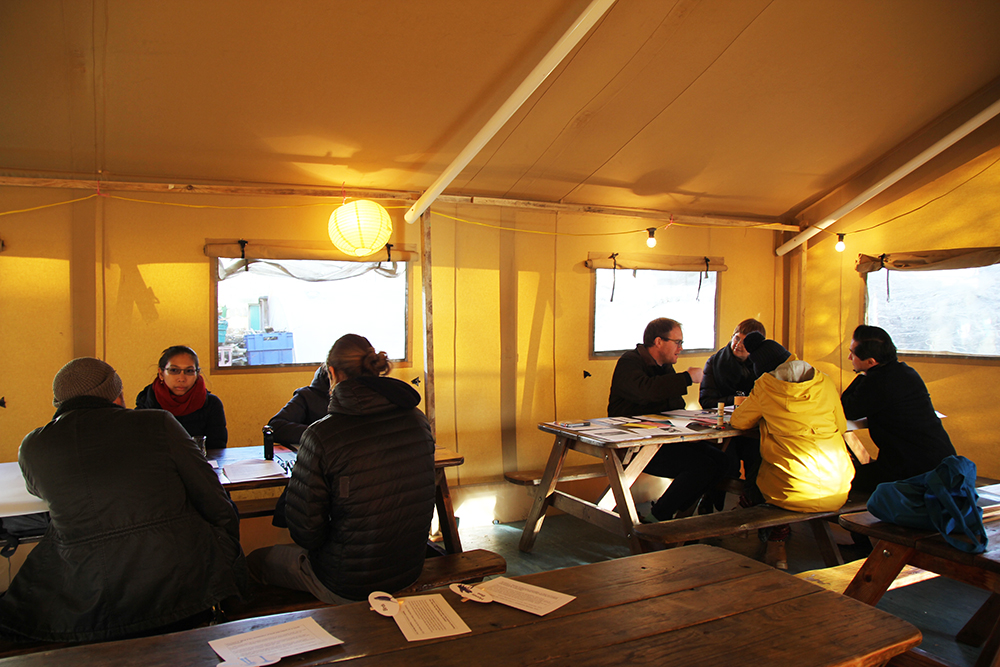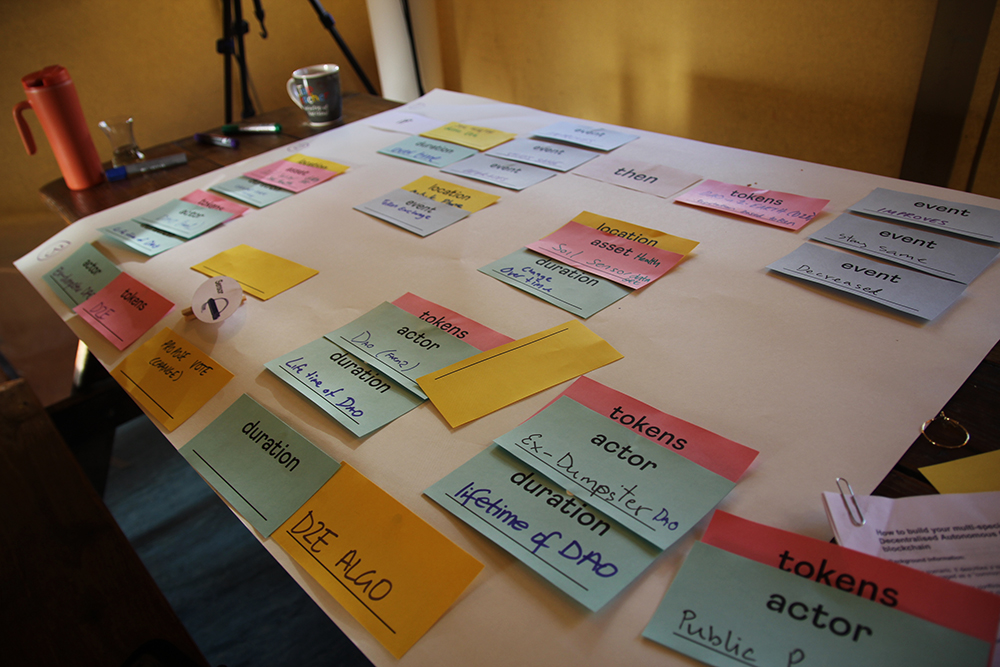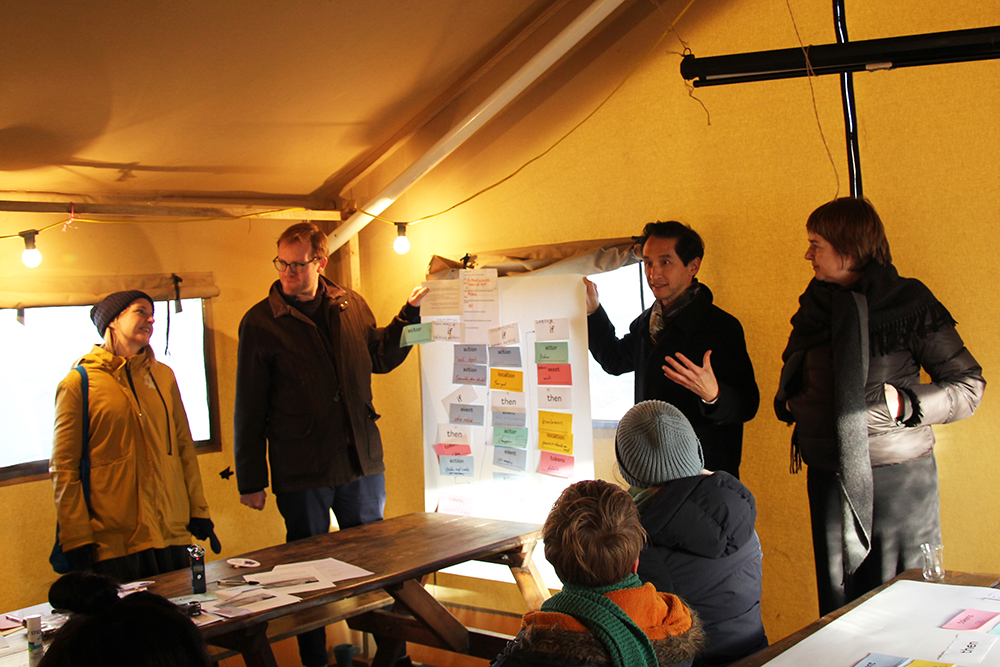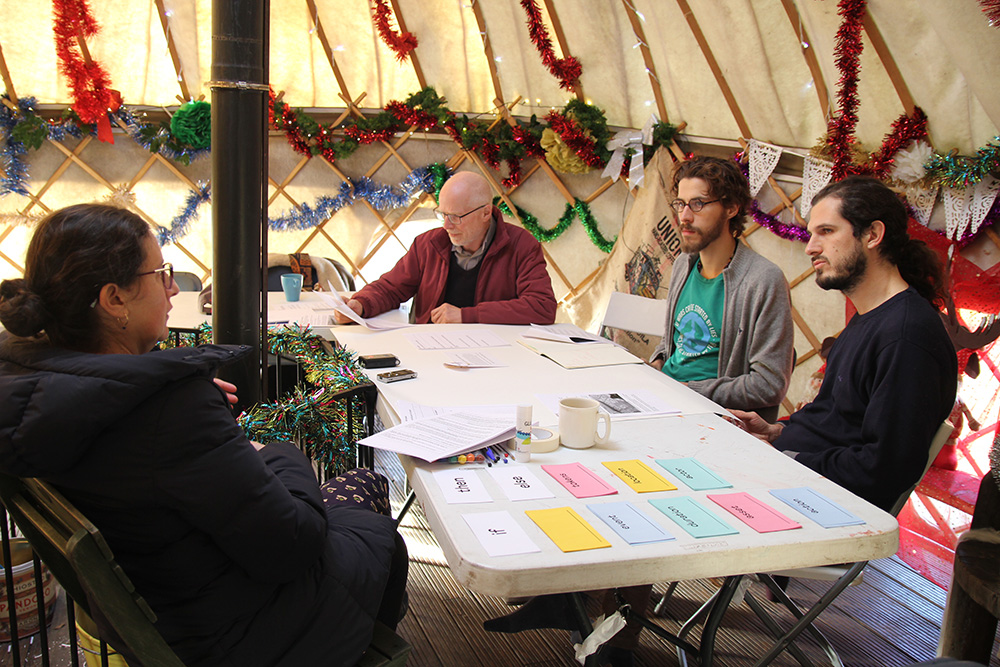Prototyping the Food Commons was the final workshop in the Algorithmic Food Justice series. In this day-long workshop held at Spitalfields Farm, we brainstormed ideas for new algorithmic systems to create a future food commons.

In the morning session, we asked participants to read a series of scenarios from our second workshop – a live action roleplay called ‘Now London is a City Farm’. The scenarios each explored a different challenge for commons management, including membership requirements, local rule-making and conflict resolution. A key focus for us was multi-species relations: we wanted to explore how the work of insects, animals and plants could be re-valued, in order to create balanced ecosystems that provide abundance for all.
We then used these scenarios as design prompts. The challenge for each of the three groups was to design a new commons organisation and then develop several examples of how resources might be distributed between its members. We imagined that these organisations existed on a ‘blockchain’ – a digital system that allows geographically dispersed members to co-ordinate securely. Blockchain technologies are best known as the underlying infrastructure for cryptocurrencies such as Bitcoin. In creating what are known as “Distributed Autonomous Organisations” (DAOs) on the blockchain, participants were experimenting with new algorithmic methods for valuing and exchanging labour between multiple species in the process of growing food.

The DAO-n to earth group worked directly with a fictional scenario from the live action roleplay. They imagined that London was now made up of multiple neighbourhood farms, each with their own local currency. They created DAO-n to Earth to act as a currency exchange, setting the exchange rate between Hackney Pounds and Tower Hamlets Coins for example. Their big idea was to link the exchange rate to soil health data (measured by future automated sensors and analysed by a fictional Artificial Intelligence bot). Simply put, the more that you care for the soil in your area, the more that your neighbourhood currency can buy. Groups doing the long work of remediating polluted soils were included too, as the exchange measured soil health over time. In blockchain terms, this DAO used soil health data over time as ‘reputation’ to weight the worth of their tokens.

The Fellowshit of Dark Matter group worked with a scenario where “waste” is eliminated, as unwanted materials from one process are used to fuel another. The group developed a techno-social system to facilitate this. An app lists all of the unwanted materials available in the commons, which other members – of all species – can claim. At this point both the giver and the recipient are rewarded with provisional tokens for this labour of exchange. These tokens become active when the value from the material is realised or “transmuted,” within the relationship e.g. waste food feeds the pigs, whose manure is then used as fertiliser. A weekly multispecies ceremony affirms and certifies that value has, in fact been transmuted, and celebrates the contributions of all species in the value chain. Where group members come up with highly creative uses for unwanted materials (that make multiple new relationships), they are given a fraction of every subsequent exchange, a kind of ‘rights’ and ‘royalties’ system.

The Corn Council group worked with a scenario about plant sacrifice, the simple observation that plants are never thanked for giving their lives to sustain humans and many other species. The group designed a system to try to reconnect disengaged and alienated actors with the plants around them. The Corn Council organisation gives tokens to reward anyone who sits with the plants; one token per minute. Each local Council decides on other token incentives for different forms of care work, such as watering and weeding, kindling new care-taking arrangements.

At lunchtime we enjoyed wonderful food cooked by members of the Zimbabwean Association using some of their crops from the farm.

In the afternoon, more participants joined us to ‘stress test’ the new organisational forms that had been designed. Knowledgeable growers reconfigured tech-focussed imaginings and added important depth and nuance to multi-species relationships and ecosystems.
Since this was the final workshop, we discussed what to do with these materials, and how we might conclude the project. At the moment, we’re working on a book publication that brings together the three prototypes with reflections on the co-design process. We’re also working on a toolkit to allow other groups to develop their own live action roleplay games.
Photo credits: Thank you to our volunteer photographers Annie Strickland, Gemma Yim and Prasana Kalanathan.